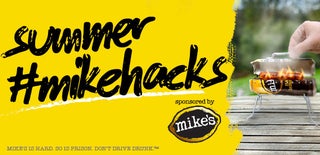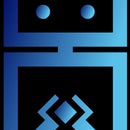Introduction: Bits4Bots - Binary to BCD Counter Using TTL's 74LS185 (Obsolete Part)
In this project you will learn how to build an 8 bit counter. No coding is required. We will use three 74LS185 IC's to make this possible. To date 9/17/2023 these IC's are no longer in production.
I will use a Transparent Solderless Breadboard - 3220 Tie Point (ZYJ-208) for the circuit.
I will explain the design of this project from the bottom to the top!
Supplies
- Transparent Solderless Breadboard - 3220 Tie Point (ZYJ-208)
- (8) 10K resistors
- (11) 680 ohm resistors
- (8) 3mm LED's
- (3) Common Anode 7 Segments
- Flexible Jumper Wires
- (3) 74Ls47 Decoders
- (3) 74LS185 TTL Binary-to-BCD Converters Buy Now
- 9V Battery or 5V power source
Step 1: Parts List
- Transparent Solderless Breadboard - 3220 Tie Point (ZYJ-208)
- (8) 10K resistors
- (11) 680 ohm resistors
- (8) 3mm LED's
- (3) Common Anode 7 Segments
- Flexible Jumper Wires
- (3) 74Ls47 Decoders
- (3) 74LS185 TTL Binary-to-BCD Converters Buy Now
- 9V Battery or 5V power source
Step 2: Toggle Switch & LED Connection
I used 8 red 3mm leds, 8 680 ohm resistors, and 8 SPST On/Off/On toggle switches available at www.bits4bots.com There are three pins on the switches. I used the bottom pin for ground. The middle pin for neutral state and top pin for power. Note that when the top pin is high it will cause the counter to count up (add) a number and when the toggle switch goes low it will subtract a number. When the pin is in neutral state the number displayed on the counter will remain the same.
- 1st pin for power (connects to power source 5V *9V battery ok)
- 2nd pin for neutral (connects to ground of led)
- 3rd pin for ground (connects to 0V)
Step 3: Arranging the 74LS185 IC's Part 1:
In this step I will arrange the three 74LS185 IC's. Please note that the notch of each pin will face right >>>>I do this so that my switches are on the bottom. The 74LS47 IC's will face <<<<<left!!!
*IMPORTANT NOTE!! Circuit will read strangely if this step is not done.
- Ground all pin 8's & 15's
- Ground pin 14 (on IC 3 only!)
- All Pin 16's to power
*The 8 Pull-Up Resistors
- Connect a 10K ohm resistor on IC 1 from pin 9 (Y8) to power. Do this for IC 2 and IC 3.
- Connect a 10K ohm resistor on IC 1 from pin 6 to power and another 10K ohm resistor from pin 7 to power. Do this for IC 1 and IC 3. NOT FOR IC 2!!!!!
- For IC 2 connect a 10K ohm resistor from pin 7 to power.
Remaining pins IC 1
- Y1 to pin C of right most common anode
- Y2 to pin B of right most common anode
- Y3 to pin A of right most common anode
- *****Y4 to pin D of MIDDLE common anode
- *****Y5 to pin 10 of IC 3
- A = pin 10 connects to switch 2. Looking at the breadboard read from right to left ( 8, 7, 6, 5, 4, 3, 2, 1)
- B= pin 11 connects to switch 3.
- C= pin 12 connects to Y1 on IC 2.
- D= pin 13 connects to Y2 on IC 2.
- E= pin 14 connects to Y3 on IC 2.
This completes IC 1 YAY!
Step 4: Arranging the 74LS185 IC's Part 2:
Next we will connect the middle IC. IC 2
Remaining pins IC 2
- Y1 should already be connected to pin 12 of IC 1 and
- Y2 to pin 13 of IC 1 and
- Y3 to pin 11 of IC 3
- Y4 to pin 11 of IC 3
- Y5 to pin 12 of IC 3
- Y6 to pin 13 of IC 3
- A = pin 10 connects to switch 4.
- B= pin 11 connects to switch 5.
- C= pin 12 connects to switch 6.
- D= pin 13 connects to switch 7.
- E= pin 14 connects to switch 8.
YAY! All done with IC 2. Moving on the the last 74LS185.
Step 5: Arranging the 74LS185 IC's Part 3:
Now we will connect the left most IC. IC 3
Remaining pins IC 3
- Y1 to pin C of the 74LS47 MIDDLE IC
- Y2 to pin B of the 74LS47 MIDDLE IC
- Y3 to pin A of the 74LS47 MIDDLE IC
- Y4 to pin B of the 74LS47 left most IC
- Y5 to pin A of the 74LS47 left most IC
- Y6, Y7, & Y8 to pull-resistor (should already be connected)
- A = pin 10 connects to Y5 IC 1.
- B= pin 11 connects to Y4 IC 2.
- C= pin 12 connects to Y5 IC2.
- D= pin 13 connects to Y6 IC2.
- E= pin 14 & pin 15 connects to ground.
- Pin 16 to VCC (already connected)
Whoo hoo :) Only a little more to go and you'll be playing around with your new project!
Step 6: The 74LS47 Wiring
Advanced Use: FYI (Please note: We will NOT use these pins)
LT stands for Lamp Test
BI stands for Blanking Input
RBI stands for Ripple Blanking Input
These IC's will face <<<<< left!!!!!!! (This gives the circuit a nice square shape that is easy for the user)
I will start with IC 4: The Right most 74LS47
- Connect D to Switch 1
- A-C are already connected
- Connect Segments A-G accordingly
Next wire the IC 5: The Middle 74LS47
- You should notice that A-D are connected
- All that is left is to match A-G to the segments on the middle common anode
Last we will wire IC 6: The Left most 74LS47
- A & B should already be connected
- C & D MUST BE GROUNDED
- I repeat C & D MUST BE GROUNDED
- Once again match A-G to the pins of the 1st 7 segment display. This display is the MSD (most significant digit)
Step 7: Connecting the 3 Common Anodes
*Please pay attention to the 7 segment you are using as they vary depending on the style and pin out. I used a 10 pin (5 on bottom & 5 on top) 0.5" blue common anode. Buy Blue 7 Segments. Click!
This is the correct pin-out:
1: E
10: G
2: D
9: F
3: Common Anode (connects to power) use 3 or 8 but not both
8: Common Anode (connects to power) use 3 or 8 but not both
4: C
7: A
5: DP
6: B
Step 8: Connect to Power Source
We have now wired all of the IC's and switches. We will now connect the ground and power. This circuit needs 5V to work properly.
However, using a 9V battery is acceptable. In the result of my findings I noticed that after the circuit has been running a while the numbers sometimes get scrabbled, this only happened when I used a battery.
I had no problems occur when I used a steady power supply. Example: USB or 5V power adapter.
I hope this project is easily understood.This is my first Instructable! I hope to post many more :)
For any questions or correction email bits4bots@gmail.com
Thank you.

Participated in the
Summer #mikehacks Contest











